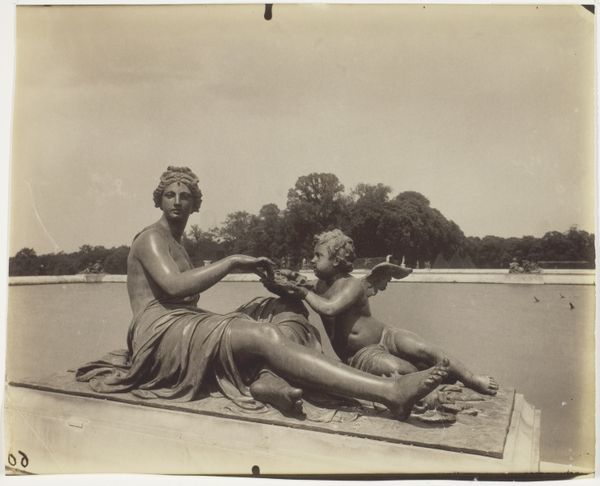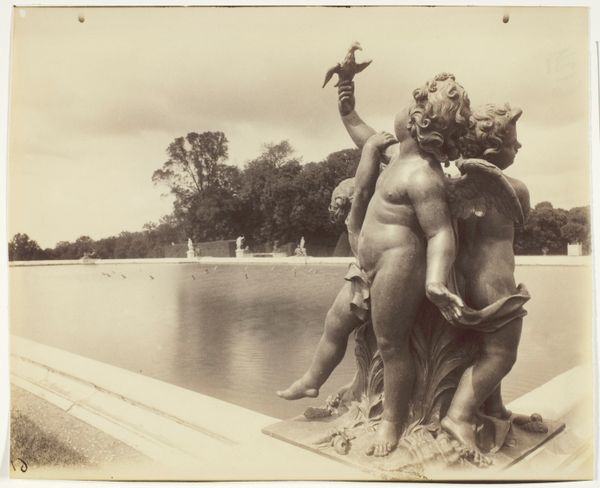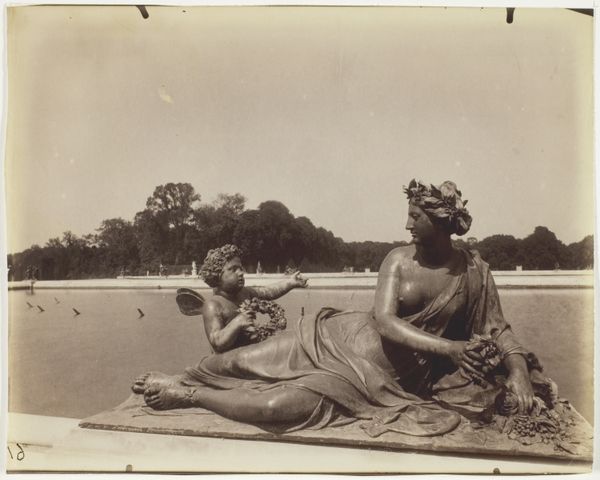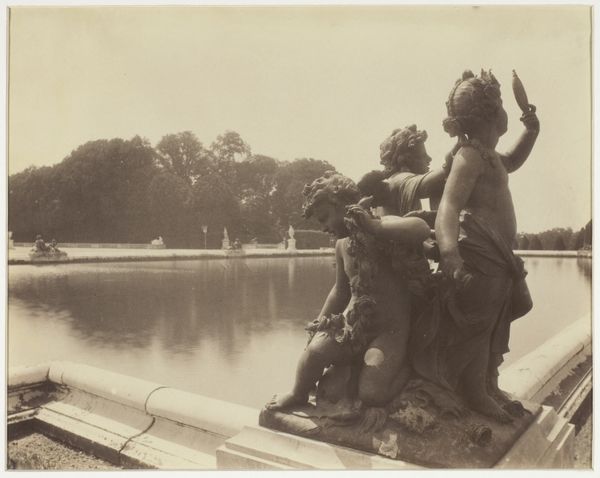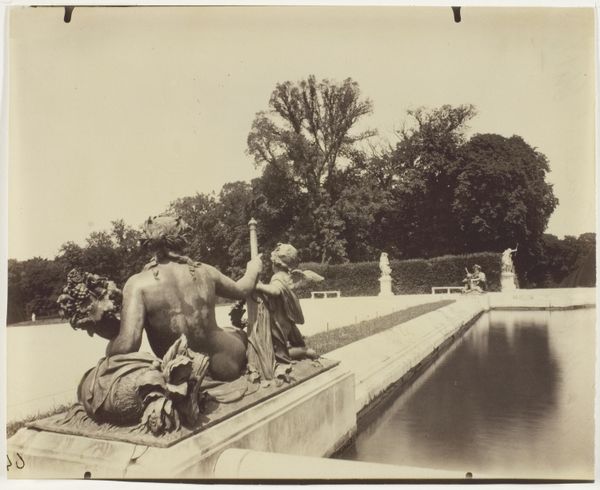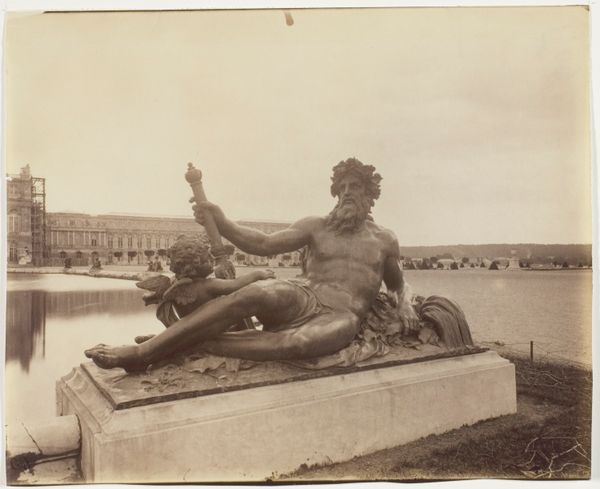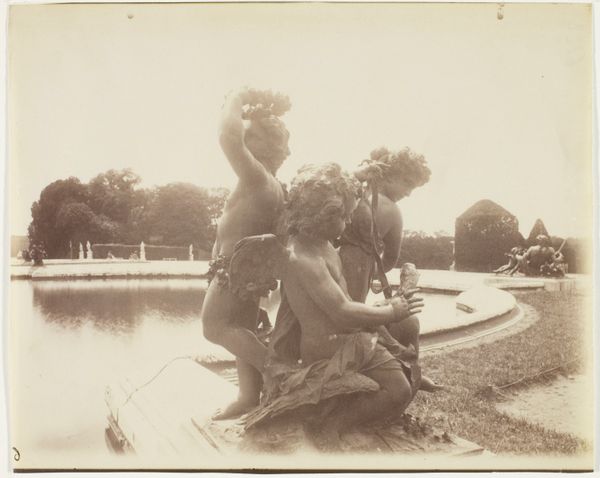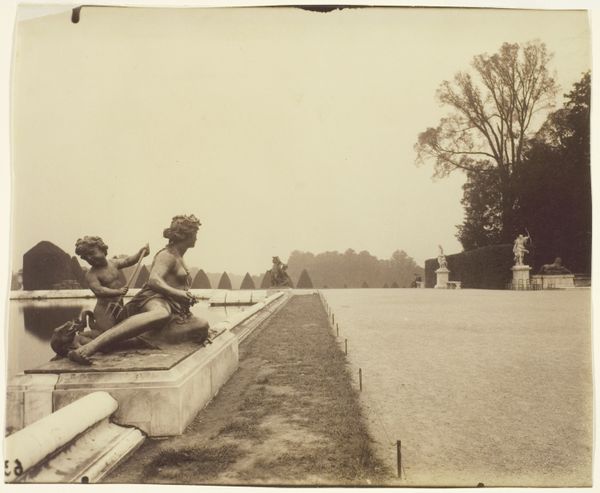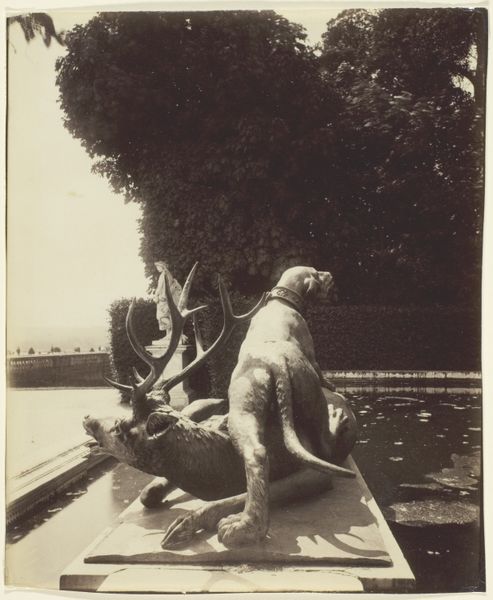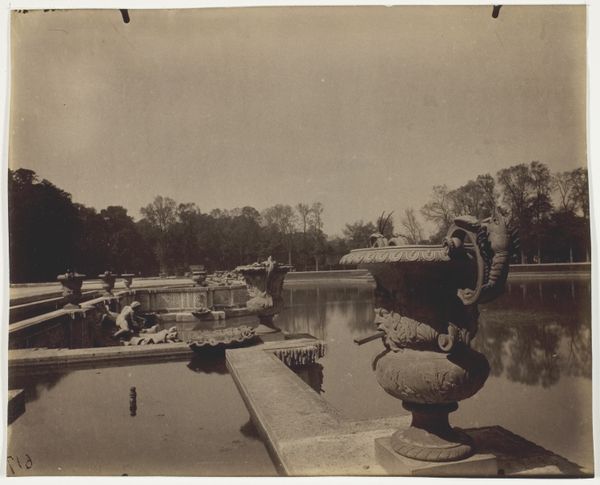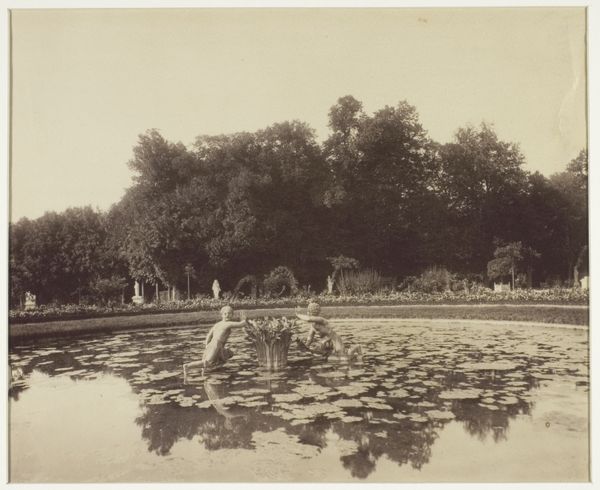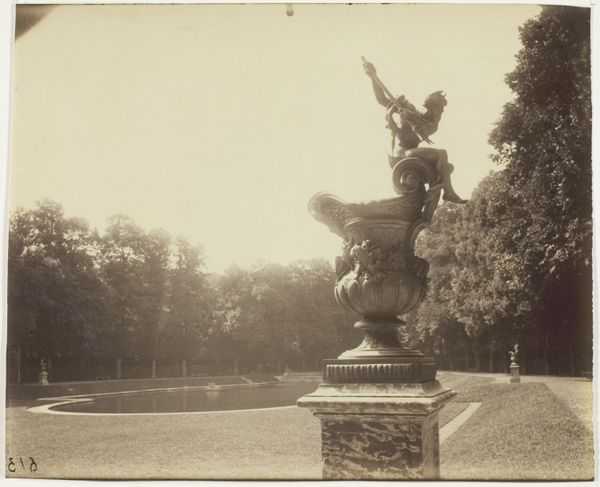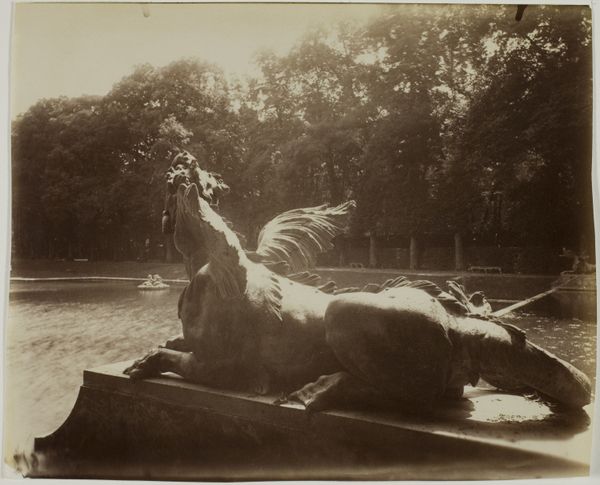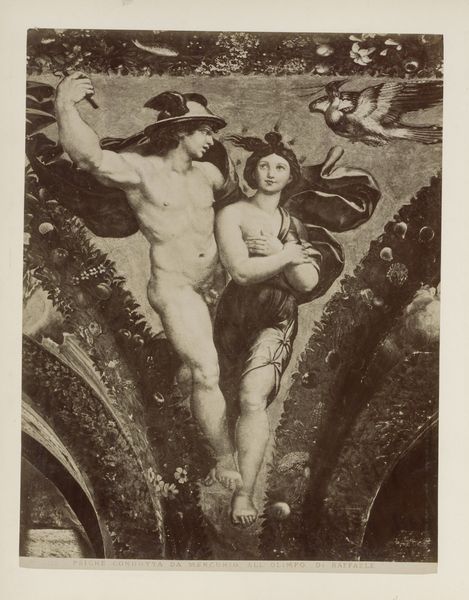
silver, print, photography
#
print photography
#
film photography
#
silver
#
wedding photograph
#
photo restoration
# print
#
wedding photography
#
colourisation
#
war
#
archive photography
#
photography
#
historical photography
#
couple photography
#
france
#
men
#
celebration photography
Dimensions: 17.5 × 21.8 cm (image); 17.7 × 21.8 cm (paper)
Copyright: Public Domain
Curator: Eugène Atget's "Versailles, Bassin du Nord," taken in 1901. It’s a silver print photography currently held at The Art Institute of Chicago. Editor: The first thing that strikes me is the stillness, a kind of heavy, antique grandeur, slightly melancholic. Curator: Atget systematically documented the architecture and gardens of Versailles at the turn of the century. The formal gardens were meticulously sculpted landscapes designed to glorify Louis XIV and embody his absolute power. The subject here seems to highlight the constructed nature of leisure and status, all literally set in stone. Editor: It speaks volumes about social stratification doesn't it? The abundance and leisure presented in such a staged way. The statuesque figures, almost lifeless, seem like props in a performance of power. Are they reflecting the ideals, or subtly critiquing them? Curator: Precisely! And let's not overlook the technical side. This is silver print, a process involving light-sensitive silver halides on paper. There's an inherent material contrast between the robust sculptures, and the very fragile, light sensitive emulsion on the print that captured it. The silver reflects light back at us too. This constant process of light reflecting is integral to this image's production and our continued interaction with it. Editor: The use of silver lends an incredible depth to the shadows and the reflections in the water. One might wonder about Atget’s relationship to his own labour photographing these monuments to the past, during an era of profound social change. Did his work support these institutions or did he intend it as a kind of autopsy? Curator: That's the key tension in Atget’s work isn't it? He recorded these rapidly changing urban and social spaces, almost creating a visual archive of a disappearing world through the labour of photography. His artistic practice also relies on collaborations with print workers and various material processes within the photographic studios. Editor: So true. These echoes of the past remind us of the human element involved in these creations, who benefited and at what expense. Thanks, that shifted my perspective entirely! Curator: Always a pleasure. It's so rewarding to see how exploring material process alongside historical narratives brings this photograph to life in so many unique ways.
Comments
No comments
Be the first to comment and join the conversation on the ultimate creative platform.
